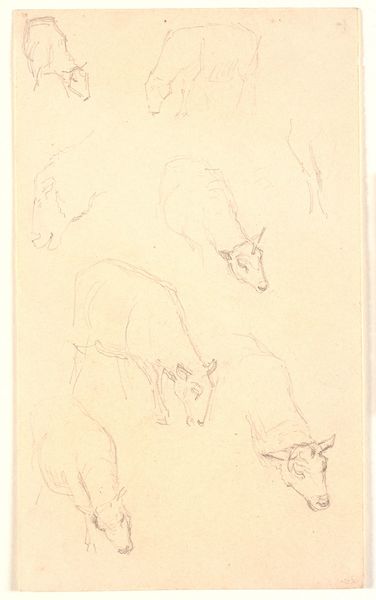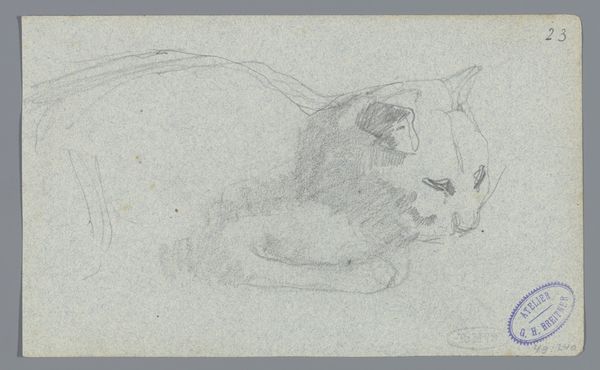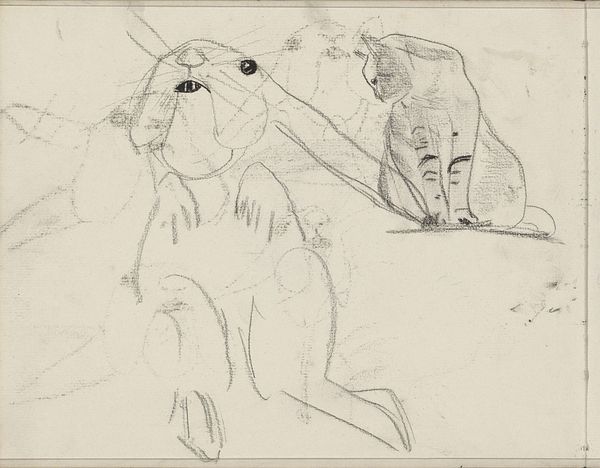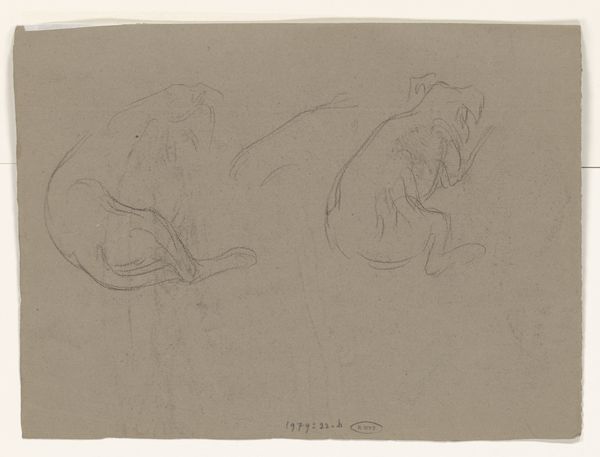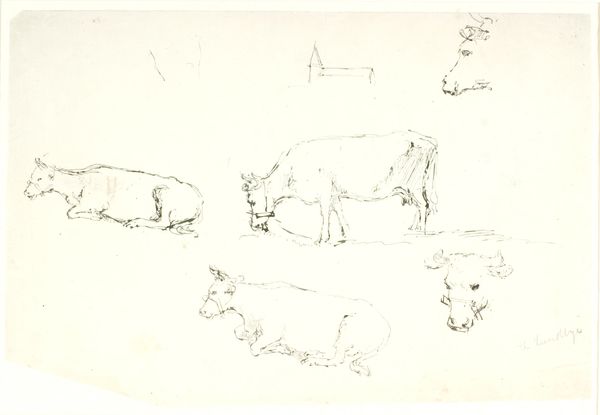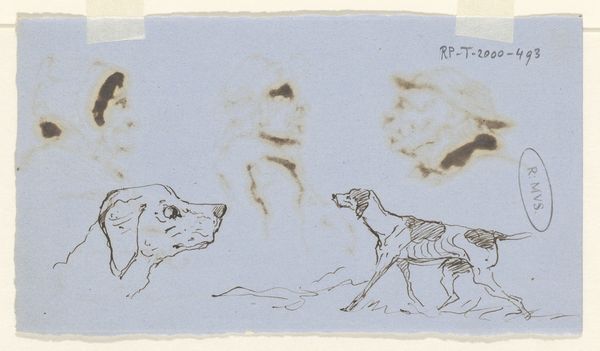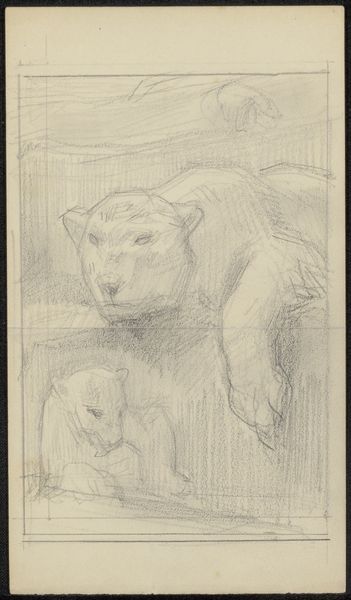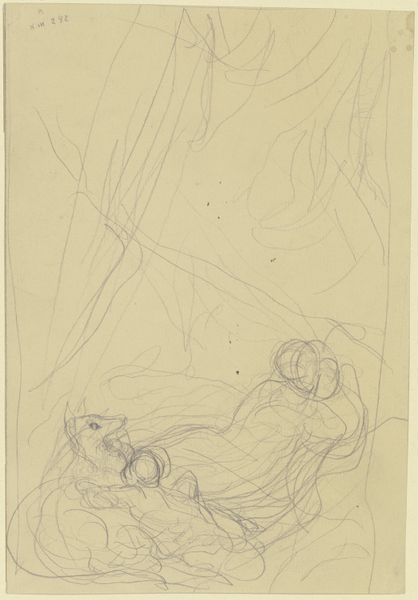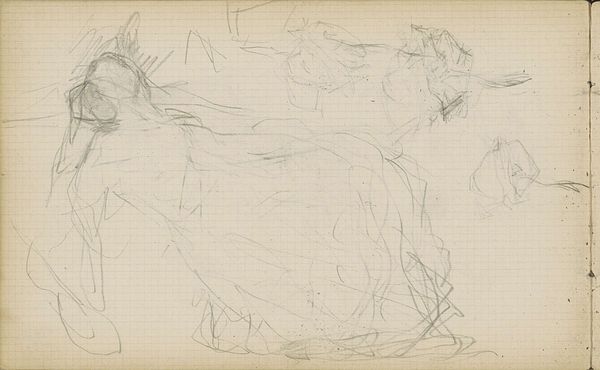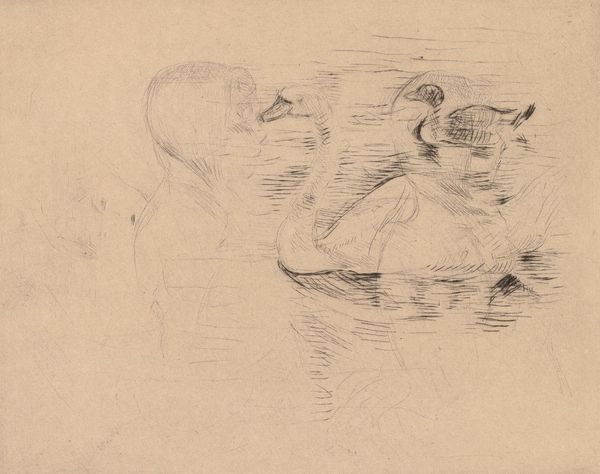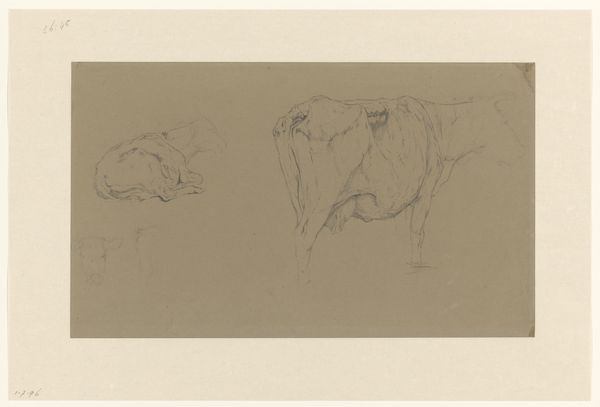
drawing, paper, pencil
#
drawing
#
pencil sketch
#
paper
#
linocut print
#
sketch
#
pencil
#
sketchbook drawing
#
realism
Dimensions: 306 mm (height) x 236 mm (width) (bladmaal)
Curator: This is “Tre studier af en løveunge,” or “Three Studies of a Lion Cub,” by Svend Rathsack, created sometime between 1902 and 1906. The medium is pencil on paper. Editor: It's quite delicate, isn’t it? Almost ghostly. The lion cub is suggested, rather than fully rendered. I wonder what dictated the artist to work with pencil, instead of another medium? Curator: That is precisely the point I want to address. Looking at this work as a historical object, we must also understand the socio-economic and cultural factors that governed pencil production and the availability of paper at that time. How might those conditions shaped the art we see here, the artist’s vision? What would a painting in oil or watercolor of a lion signify at that time, in contrast to this study in pencil? Editor: The pencil marks allow a sense of immediacy. One can easily imagine the artist sketching quickly to capture a fleeting moment of the animal in its various poses. These studies certainly lack any hint of idealization. One may ponder, what role did zoological gardens play during this period as sites of both public display and artistic study? Curator: Exactly! Zoos were becoming increasingly popular, reflecting a shift in society's relationship with nature, with imperial powers controlling and commanding their resources, human and animal. This work can thus serve as a lens through which we examine the complex dynamics of power, display, and scientific observation prevalent in early 20th-century European culture. What implications can we extrapolate from this humble medium? Editor: Considering the historical context, it is not only a study of a lion cub, but it prompts questions about human relationships with the animal world, the rise of zoological studies, and how artists participate in circulating those representations. Curator: Indeed. The very act of observing, drawing, and archiving becomes implicated in a network of knowledge and power, far removed from a purely aesthetic experience. The scale and ephemerality underscore the transience of control. Editor: It leaves us considering what other material constraints shaped our artistic landscape. Curator: Absolutely, and these humble sketches provoke deeper engagement with both our past and present.
Comments
No comments
Be the first to comment and join the conversation on the ultimate creative platform.
